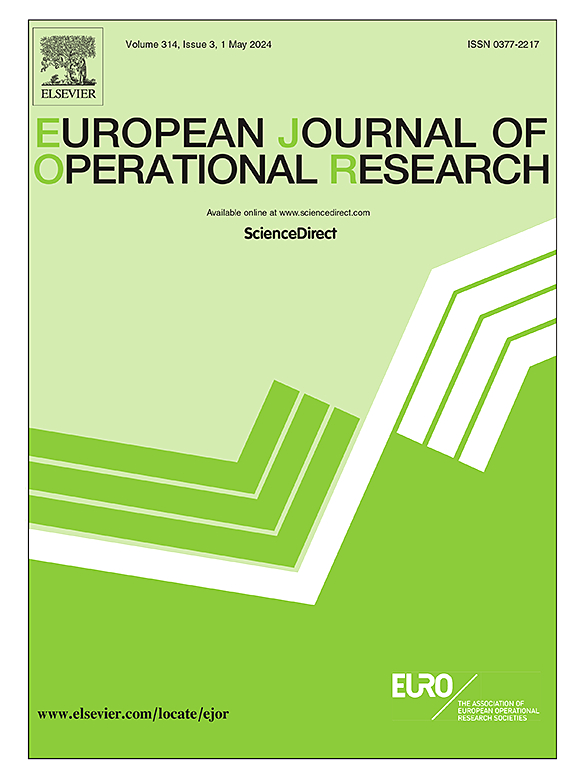具有实时管道信息的两级随机备件库存系统的供应灵活性
IF 6
2区 管理学
Q1 OPERATIONS RESEARCH & MANAGEMENT SCIENCE
引用次数: 0
摘要
在两级供应链中,要以最低成本实现高服务水平,就必须采用灵活的供应办法,例如横向转运和紧急交货,特别是在当地仓库缺货期间。但是,这些灵活的供应办法只有在使交货比定期补充订单更早到达时才有益。因此,跟踪未完成订单的交付并获得有关供应管道的信息是至关重要的,特别是对于需求通常缓慢变化的备件网络。物联网等实时跟踪技术的进步,为供应管道提供了关键的可见性。我们提出了一种灵活的供应策略,该策略结合了关于定期补充订单位置的实时管道信息。我们建立了一个模型来分析在提出的灵活供应策略下,每个供应选项的选择比例和长期平均运营成本。通过将提出的模型与不包含管道信息的基线模型进行比较,我们的数值研究表明,使用管道信息平均节省了5.7%的成本。此外,整合管道信息会影响最优库存分配,降低中心仓库的目标库存水平,并将更多库存转移到下游的本地仓库。管道可见性减少了对昂贵的紧急交付的依赖,从而实现更可持续、更灵活的供应链。本文章由计算机程序翻译,如有差异,请以英文原文为准。
Supply flexibility in two-echelon stochastic spare parts inventory systems with real-time pipeline information
In a two-echelon supply chain, achieving high service levels at minimal cost can necessitate the use of flexible supply options, such as lateral transshipment and emergency delivery, particularly during stockouts at local warehouses. However, these flexible supply options are only beneficial if they enable deliveries to arrive earlier than regular replenishment orders. Therefore, it is essential to track the delivery of outstanding orders and obtain information about the supply pipeline, especially for spare parts networks where demand is typically slow-moving. Advances in real-time tracking technologies, such as the Internet of Things, provide critical visibility into the supply pipeline. We propose a flexible supply strategy that incorporates real-time pipeline information with regard to the position of regular replenishment orders. We develop a model to analyze the fraction of each supply option chosen and the long-term average operational cost under the proposed flexible supply strategy. By comparing the proposed model with a baseline model that excludes pipeline information, our numerical study reveals an average cost saving of 5.7% from using pipeline information. Furthermore, incorporating pipeline information impacts optimal inventory allocation, reducing the target inventory level at the central warehouse and shifting more inventory downstream to local warehouses. Pipeline visibility reduces the reliance on expensive emergency deliveries, leading to a more sustainable and agile supply chain.
求助全文
通过发布文献求助,成功后即可免费获取论文全文。
去求助
来源期刊

European Journal of Operational Research
管理科学-运筹学与管理科学
CiteScore
11.90
自引率
9.40%
发文量
786
审稿时长
8.2 months
期刊介绍:
The European Journal of Operational Research (EJOR) publishes high quality, original papers that contribute to the methodology of operational research (OR) and to the practice of decision making.
 求助内容:
求助内容: 应助结果提醒方式:
应助结果提醒方式:


